
Blog » Health & Safety » What Can Dogs NOT Eat? Busting Common Myths & Dangerous Misconceptions
What Can Dogs NOT Eat? Busting Common Myths & Dangerous Misconceptions

From grapes and garlic to surprising no-gos like peanut butter and dairy, here’s what to avoid and which “toxic” foods may not be as dangerous as you think.
What Your Dog Eats Matters: Food Is Food
There’s no such thing as “human food.” Food is food. The idea that dogs should only eat “dog food” is outdated. Our dogs deserve real, nourishing ingredients, just like we do.
The truth is, many processed pet foods are filled with artificial additives, poor-quality ingredients, and questionable fillers. Worse, some foods sold as “treats” or “safe chews” are downright dangerous.
At The Luna Collection, we believe that feeding your dog well is part of loving them well. So let’s talk about what foods you should never give your dog and which ones aren’t as scary as the rumours make them sound.
We’ve created this list to help you protect your pup’s health, understand what’s truly toxic, and explore safe, healthy alternatives.
Top 10 Toxic Foods for Dogs
These foods are definitely dangerous for your dog. Even small amounts can cause severe illness or worse, so keep them completely out of reach.
- Chocolate
- Xylitol
- Grapes, Raisins, Sultanas, Currants
- Onions, Leeks, Chives, Scallions
- Macadamia Nuts
- Alcohol
- Avocado (pit, skin, and leaves)
- Fruit Pits (Apricot, Peach, Plum, Cherry, Persimmon)
- Raw Yeast Dough
- Nutmeg
There are 5 more honourable mentions in detail below (surprise!) keep reading to learn about them!
Please Note: Many of the poisonous foods for dogs, such as grapes, raisins, and chocolate, are also toxic to cats. While we’ve focused on the most common foods for dogs, be aware that many of these foods pose a risk to both dogs and cats, so always keep them out of reach of both pets.
Let's Dive Deeper into Dog Food Safety:
Poisonous / Toxic
Foods that are definitely dangerous for dogs.
Not So Safe as You Might Think
Foods that are more dangerous than you’d expect.
Safe (When Prepared Correctly)
Foods that are in fact safe and healthy.
Want to know more about which foods can be harmful or even deadly for your dog? We’ve broken it down into three categories to make it easier for you to navigate dog food safety. Whether you’re wondering if something is safe or a hidden risk, we’ve got the info you need to keep your dog safe and healthy. Plus, don’t forget to check out our seasonal warnings to ensure your dog stays safe during festive periods.
These foods are poisonous to dogs, even in small amounts. They can cause serious illness, seizures, or death. If your dog eats any of the following, call your vet immediately. Keep them well out of reach at all times.
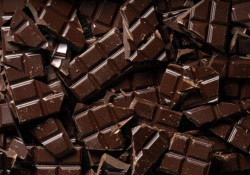
1. Chocolate
Chocolate contains theobromine, a compound dogs can’t process. The darker the chocolate, the more dangerous it is.
Even small amounts can cause vomiting, diarrhoea, tremors, seizures, or heart problems.
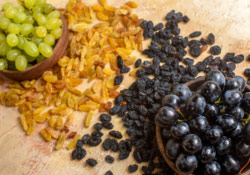
2. Grapes, Raisins, Currants and Sultanas
These dried and fresh fruits can cause sudden kidney failure. Some dogs react badly to even one or two.
There is no safe amount, so avoid them completely. That includes anything baked with raisins or sultanas.
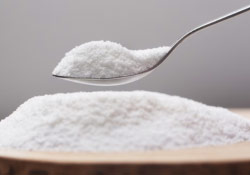
3. Xylitol / Birch Sugar
Xylitol is an artificial sweetener found in sugar-free products like chewing gum, toothpaste, mouthwash, and some peanut butters and baked goods. It may also be listed as birch sugar on ingredient labels.
Even tiny amounts can cause a dangerous drop in blood sugar. It can also lead to seizures, liver failure, or death.
Always check labels carefully before giving your dog anything made for humans.
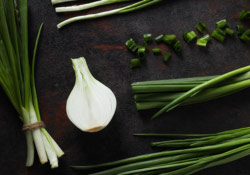
4. Onions, Leeks, Chives and Spring Onions
These vegetables are all part of the allium family. They can damage your dog’s red blood cells and lead to anaemia.
Toxicity can be delayed. Symptoms may appear a few days after ingestion.

5. Macadamia Nuts
Macadamia nuts can cause vomiting, tremors, weakness and fever. Just a few can be enough to cause serious symptoms.
Avoid all mixed nuts and baked goods containing macadamias.

6. Alcohol
Dogs absorb alcohol quickly. Even small sips can lead to vomiting, disorientation, respiratory problems or seizures.
This includes alcohol in drinks, desserts, raw dough, and even household products like hand sanitiser.
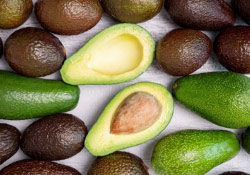
7. Avocado Skin, Pit and Leaves
While a small amount of avocado flesh is safe, the skin, pit and leaves contain a toxin called persin. The pit also poses a choking and blockage risk.
Never let your dog chew on or eat any part of the avocado plant other than the ripe flesh.
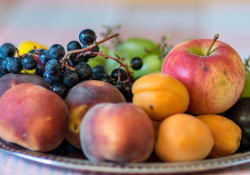
8. Fruit Pits and Seeds
The pits of apricots, peaches, plums, cherries, persimmons and apple seeds contain cyanide compounds. Chewing or swallowing them can be dangerous.
They can also block the digestive tract.
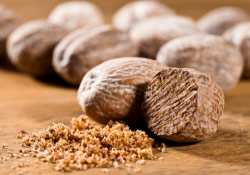
9. Nutmeg
Nutmeg contains myristicin, which affects the nervous system. It can cause confusion, tremors, a high heart rate or seizures.
It’s often found in holiday baking and spiced biscuits.
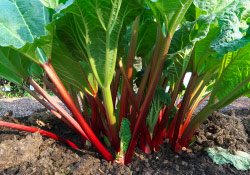
10. Rhubarb Leaves and Roots
Rhubarb leaves and underground parts contain high levels of oxalates. These can damage the kidneys and affect calcium levels.
Never let your dog eat rhubarb from the garden or compost.
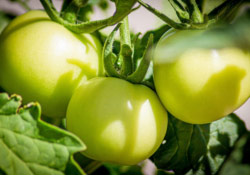
11. Green Tomatoes and Tomato Plants
The leaves, stems and unripe (green) tomatoes contain tomatine and solanine. These can cause vomiting, weakness, and confusion.
Only ripe red tomato flesh is safe in small amounts. Avoid anything green or leafy.
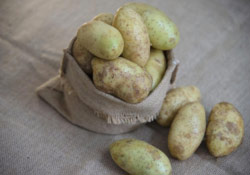
12. Raw and Green Potatoes
Uncooked or green potatoes are high in solanine, which is toxic to dogs. This can cause nausea, tremors or breathing problems.
Cooking reduces the risk, but potatoes offer little nutritional benefit. Best avoided altogether.

13. Raw Yeast Dough
If eaten, raw dough can expand in the stomach. It also produces alcohol during fermentation.
This is painful and dangerous. It can cause bloating, vomiting, and alcohol poisoning. Call your vet right away if your dog eats dough.

14. Caffeine
Caffeine is found in tea, coffee, energy drinks, and some supplements. Dogs are very sensitive to it.
Caffeine can cause hyperactivity, muscle tremors, an irregular heartbeat, and seizures.
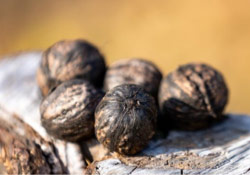
15. Black Walnuts
Black walnuts contain a toxin called juglone, which can cause upset stomach, vomiting, and diarrhoea.
If your dog happens to eat one he found outside, call your vet.

16. Blue Cheese
Blue cheese should be avoided due to the presence of Roquefortine C, a toxin produced by the moulds used in its production.
This toxin can cause serious symptoms like vomiting, diarrhoea, tremors, and even seizures in dogs.
These foods are often marketed as safe or even healthy, but they can do more harm than good. Some may seem fine on the surface, but they carry serious risks from digestive issues and inflammation to choking hazards and long-term health problems. A few might be tolerated by some dogs in very small amounts, but many are best avoided altogether. If you’re in doubt, don’t feed it.
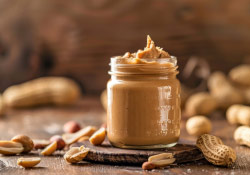
1. Peanut Butter
Peanut butter is commonly used in enrichment toys and training, but it’s not as safe as people think. Some brands contain the artificial sweetener xylitol, sometimes labelled as birch sugar, which is highly toxic to dogs. Even xylitol-free options are high in fat, omega-6s, and may contain aflatoxins, added sugar, or salt.
If you need an alternative, a small amount of pure almond butter (with no additives) is a better choice.
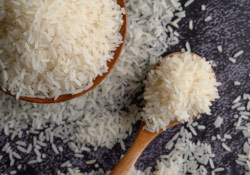
2. Rice
Rice is high in carbohydrates and can cause blood sugar spikes, insulin resistance, and weight gain over time. It also often contains arsenic, a toxin found in rice that can accumulate due to contaminated water and soil. While boiled rice is commonly used for dogs with diarrhoea, healthier alternatives like steamed white fish and pumpkin are more nutritious and easier on the stomach.
For better digestion and long-term health, avoid relying on rice and choose more beneficial options.
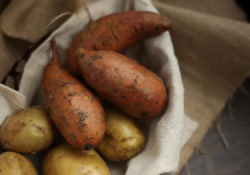
3. Potatoes and Sweet Potatoes
Sweet potatoes and white potatoes are both high in starch. They can feed yeast and bad bacteria, contribute to weight gain, and cause blood sugar spikes.
Sweet potatoes are often seen as healthy, but they’re not ideal for dogs with itchy skin, ear infections, or digestive issues.
White potatoes, even when cooked, offer little nutritional value to dogs. And while raw or green potatoes are toxic (see our toxic foods list), even thoroughly cooked ones are just empty carbs. If you’re feeding a fresh, whole food diet, there are far better options.
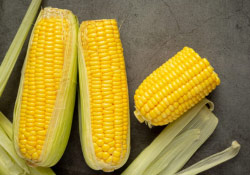
4. Corn on the Cob
Corn itself is not toxic, but the cob is a major hazard. Dogs can easily swallow chunks, leading to a serious digestive blockage. This often requires surgery to remove.
If you do offer corn, always cut it off the cob and serve plain in small amounts.

5. Rawhide
Rawhide chews are sold as long-lasting treats, but they’re difficult to digest and often processed with chemicals like bleach or glue. Chunks can break off and cause choking or intestinal blockages.
Many rawhides are also imported and poorly regulated.
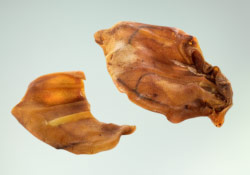
6. Pig Ears
Pig ears are high in fat and can cause digestive issues or pancreatitis. They also carry a risk of contamination, especially when smoked or imported. Dogs that gulp their chews may choke or swallow large pieces, leading to obstruction.
If you feed them at all, only choose raw, natural ears from a trusted source and supervise closely.

7. Cooked Bones
Cooked bones can splinter into sharp fragments. These can cause internal injuries, blockages, or severe constipation.
Only raw bones should ever be offered, and only under supervision.

8. Cooked Fats and Grease
Feeding leftover fats or drippings from cooked meat can lead to pancreatitis, a painful and potentially life-threatening condition. It’s especially risky for small dogs and breeds prone to digestive issues.

9. Processed Meats
Ham, bacon, sausage, and lunch meat are full of salt, fat, nitrates, and preservatives. Even small amounts can put stress on your dog’s kidneys and digestive system. Regular feeding can increase the risk of pancreatitis and obesity.
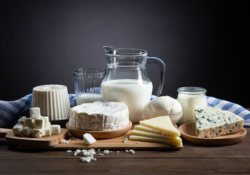
10. Dairy (Milk, Yogurt, Cheese)
Many dogs are lactose intolerant. They lack the enzymes needed to break down milk, which can lead to diarrhoea, bloating, and vomiting. Pasteurised cow’s milk also contains proteins that may trigger inflammation in sensitive dogs.
Milk is not necessary in a dog’s diet and provides little benefit compared to the risks. If you do want to feed it, choose small amounts of raw goat’s milk, which is more digestible and naturally rich in enzymes and nutrients.
Yogurt is often given for probiotics, but pasteurisation destroys most of the beneficial bacteria. Many store-bought yogurts also contain sugar, flavourings, or xylitol, which can be harmful.
Cheese is high in saturated fat and salt. It can cause constipation or digestive upset, especially in dogs with sensitive stomachs. Additionally, blue cheese should be avoided due to the presence of Roquefortine C toxin.
For dogs who need a probiotic boost, raw goat’s milk kefir is a much better option than any commercial dairy product.
Let’s bust a few myths, shall we? Some foods have been unfairly banished to the “toxic” list when they’re actually quite lovely as long as you know how to serve them properly.
The key is in the details: the right form, the right amount, and the right preparation. Here are a few ingredients that get a bad rap but can be safe (and even beneficial) for your dog when treated with a bit of care.
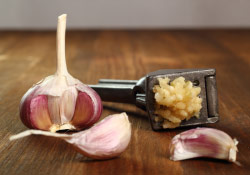
1. Garlic
Garlic is one of the most misunderstood foods for dogs. While large amounts or powdered forms can be harmful, fresh raw garlic, prepared properly, can support your dog’s immune system, gut health, and even help repel fleas and ticks.
It contains powerful natural compounds that are antimicrobial, antifungal, and anti-parasitic.
To use it safely:
- Only use fresh, raw, organic garlic (never from a jar or powder)
- Mince or finely chop it, then let it sit for 10 to 15 minutes before serving — this activates allicin, the compound responsible for its benefits
- Feed the correct amount for your dog’s weight
Safe daily amounts:
- Up to 5 kg (11 lbs): ⅙ tsp (about half a small clove)
- 5–10 kg (11–22 lbs): ⅓ tsp
- 10–20 kg (22–44 lbs): ½ tsp
- 20–30 kg (44–66 lbs): ⅔ tsp
- Over 30 kg (66+ lbs): 1 tsp
Start small and work up gradually. And yes most vets will gasp dramatically at the mere mention of garlic. But used properly, it’s a safe and time-tested addition to your dog’s real food bowl.
If you are still unsure, read what our good friends at Dogs Naturally Magazine have to say about garlic. It’s a myth worth busting.

2. Mushrooms
Mushrooms can strike fear into the heart of any dog parent and with good reason. Wild mushrooms can be deadly, and dogs should never be allowed to forage or nibble them outside.
But not all mushrooms are off limits.
Store-bought edible mushrooms, like white button, cremini, portobello, shiitake, and oyster mushrooms, are safe for dogs once cooked. They’re a good source of fibre, vitamins, and minerals, and can support digestion and immune function.
Just make sure you cook them first. Mushrooms have tough cell walls made of chitin, which cooking helps break down, making the nutrients easier to absorb.
Then there are medicinal mushrooms like turkey tail, reishi, lion’s mane, maitake, and chaga. These have been used for centuries and are packed with immune-modulating compounds like beta-glucans and antioxidants. They’ve been studied for their potential in cancer care, allergy support, and inflammation control. Most are available as powders or extracts, which are easy to add to food in small amounts.
What’s not safe:
- Any mushroom growing in the wild (unless you’re a qualified mycologist — and even then, let’s not risk it)
- Mushrooms cooked with garlic, onions, salt, butter, or oil
- Processed mushrooms or tinned varieties with additives
Don’t take this as an invitation to go mushroom foraging with your dog, but if you need more scientific data, the good people at Dogs Naturally Magazine explain why safe mushrooms deserve a second look.
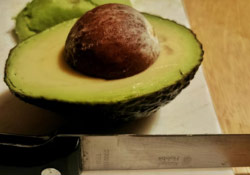
3. Avocado Flesh
Avocados often end up on “toxic food” lists, but it’s not the whole fruit that’s the problem, it’s the pit, skin, and leaves. These parts contain a compound called persin, which can be harmful to dogs (and more so to other animals like birds and horses).
The flesh, however, is absolutely fine for dogs in small amounts. It’s rich in healthy fats, fibre, and essential vitamins like E and B-complex, and can help support your dog’s skin, coat, and immune system.
That said, don’t use avocado as a rugby ball during playtime! Your dog should never have the chance to chew or swallow it whole. Never let your dog get hold of the pit or skin, which are a choking hazard and a potential source of toxicity.
If your dog is prone to pancreatitis or is on a low-fat diet, give avocado a miss. Otherwise, a small spoonful of ripe avocado flesh can be a nourishing treat.
Still unsure? The team at Dogs Naturally Magazine covers it beautifully.
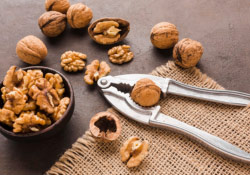
4. Walnuts
Walnuts have had a bad reputation for being toxic to dogs, but not all walnuts are created equal.
Fresh, raw, shelled English walnuts are safe for dogs in small amounts. They offer healthy fats, antioxidants, and brain-boosting nutrients. If you’re a fan of fresh snacking and happen to drop a bit of plain walnut, there’s no need to panic.
But — and it’s a big but — avoid any that are mouldy, old, or damp, as they can harbour mycotoxins, which are extremely harmful and can cause tremors or seizures. And never feed black walnuts. They’re toxic to dogs and can cause vomiting, diarrhoea, and more serious symptoms.
Black walnut trees have been grown in the UK since the 1600s and are still found in gardens, parks, and woodland — especially in southern England and Wales. So if you’re out walking and your dog snuffles up a whole walnut from the ground, it may not be the safe kind.
If you’re not sure what type of walnut you’re dealing with, play it safe and skip them altogether. And if your dog gobbles one up, run, don’t walk, to your nearest vet.
Walnuts are also high in fat, so even the safe kind should only be offered occasionally. Chop or crush them to reduce choking risk, and always serve them plain – no salt, no coatings, no festive garnishes.
Printable List of Toxic Foods for Dogs
What to Avoid, What to Watch Out For, and What’s Safe
This guide isn’t just for you. It’s for the dog-sitter, the weekend dog boarder, the well-meaning grandparent who says, “Oh, he can have just a nibble of my chocolate muffin, right?”
Print it. Frame it. Share it (or at least stick it to the fridge).
Print a copy and hand it to anyone looking after your dog, especially if they have kids. Chocolate, grapes, raisins, and randomly dropped snacks are a minefield. Warn them. Repeatedly. Or better yet, find someone with tidier children. Or older children. Or no children. You get the idea 😉
Pop it in your bag for holidays. Stick it on the fridge. Laminate it if you must – you know you want to! Just make sure anyone feeding your dog knows what’s safe, what’s questionable, and what’s a straight-up no.
Because your dog deserves better than guesswork.
During certain festive periods, the risk of your dog getting into dangerous foods increases.
Whether it’s a festive treat on the kitchen counter or scraps from your celebratory meal, some seasonal foods can be harmful or even deadly to dogs.
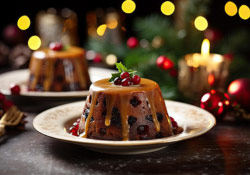
Christmas
- Chocolate: A common Christmas treat, but toxic to dogs. Keep all chocolate out of reach, especially around Christmas when chocolate gifts and decorations are common.
- Grapes and Raisins: Popular in Christmas cakes, mince pies, Christmas puddings, and other desserts, but they can cause kidney failure in dogs, even in small amounts.
- Alcohol: Christmas cocktails and festive drinks may be tempting, but even a small amount can be dangerous for your dog. Creamy Irish liquors like Baileys might smell super tempting to your dog. Watch those cocktail glasses like a hawk. Christmas cake, Christmas pudding, and mince pies contain both raisins and alcohol – keep them away from your dog at all costs.
Once, we were at the Winchester Christmas Market when Lucy woofed down a huge mince pie she found on the street. We spent the rest of the day at the nearest vet inducing vomiting instead of enjoying ourselves. Be extra careful where kids might take a bite of a mince pie and toss out the rest. We remember the dreaded mince pie incident in horror and never take the pups to such events anymore, much safer that way!
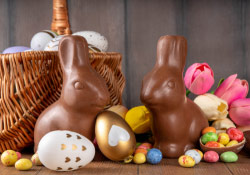
Easter
- Chocolate Eggs: Chocolate consumption increases over Easter, but deadly to dogs. Keep Easter eggs and baskets well out of reach.
- Hot Cross Buns: These often contain raisins or sultanas, which are harmful to both dogs and cats. Be mindful of where you place these treats.
- Simnel Cake: This traditional Easter cake is loaded with raisins and currants, which are toxic to dogs. Avoid letting your dog get near it!

Halloween
- Sweets and Chocolate: Chocolate is a major risk, especially dark chocolate, which contains the highest levels of theobromine. Keep your Halloween sweets and chocolate well out of reach of your pets and be mindful of your kids’ Halloween harvest from trick-or-treating with buckets of treats!
- Alcohol: If you love a good fancy dress Halloween party (we throw one every year and dress up the pups as well as ourselves), watch out for alcohol. Cocktails, wine, or spirits may be left within reach of your pets. Always be cautious of unattended drinks!
- Cigarette Butts: Be aware of discarded cigarette butts on the streets during trick-or-treating or at Halloween parties. Cigarette butts can be toxic to dogs due to the nicotine content, which can cause tremors, vomiting, seizures, and in severe cases, death. Always dispose of cigarette butts safely to prevent your dog from ingesting them (and, honestly, do people still smoke?).
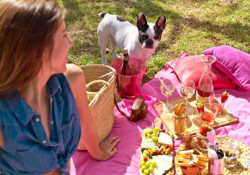
Summer, Beach Walkies, Picnics & BBQs
- Grilled Foods: While dogs love the smell of BBQs, cooked bones and fatty meats can cause serious digestive issues or even pancreatitis.
- Corn on the Cob: Often left on the ground after BBQs, corn on the cob can cause choking and intestinal blockages. Always dispose of corn cobs safely.
- Picnics at the Beach or the Park: During summer outings to the beach, you’ll often encounter people enjoying picnics. If you let your dog off-lead, be cautious. They might join someone’s picnic table and help themselves to whatever’s on offer! Watch out for random snacks that could be harmful. Cigarette butts can also be a problem, careless people might leave them behind. Be mindful of what your dog picks up.
Disclaimer:
This post is not sponsored by Dogs Naturally Magazine. We simply refer to their well-researched data and references, presented in an easy-to-digest format, to guide us in raising our dogs naturally and holistically.
We strongly believe in the power of a holistic approach to their health and well-being. Our go-to sources for expert advice include Dr. Karen Becker and Rodney Habib, co-authors of The Forever Dog and passionate advocates for long-lived, healthy dogs. You can find more information on their website, Planet Paws.
We also follow Dr. Judy Morgan, a holistic veterinarian who combines traditional and alternative medicine to provide personalized care for pets. These professionals, along with the resources at Dogs Naturally Magazine, help us make informed decisions about our pets’ health and care.
For further insights and resources, we encourage you to explore their websites and books for more in-depth information on keeping your dog healthy, naturally.
Share This Post



